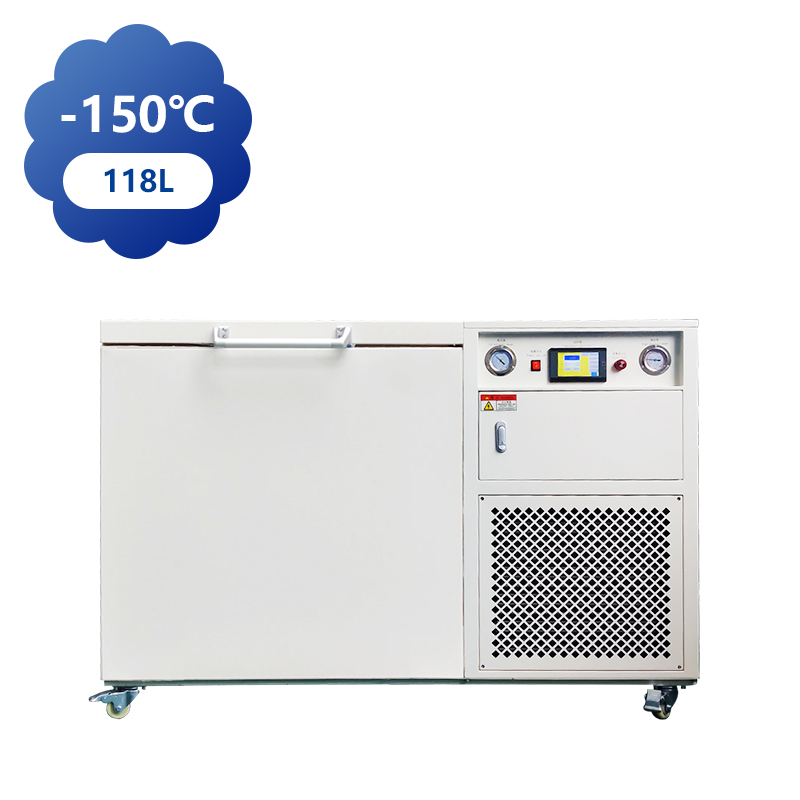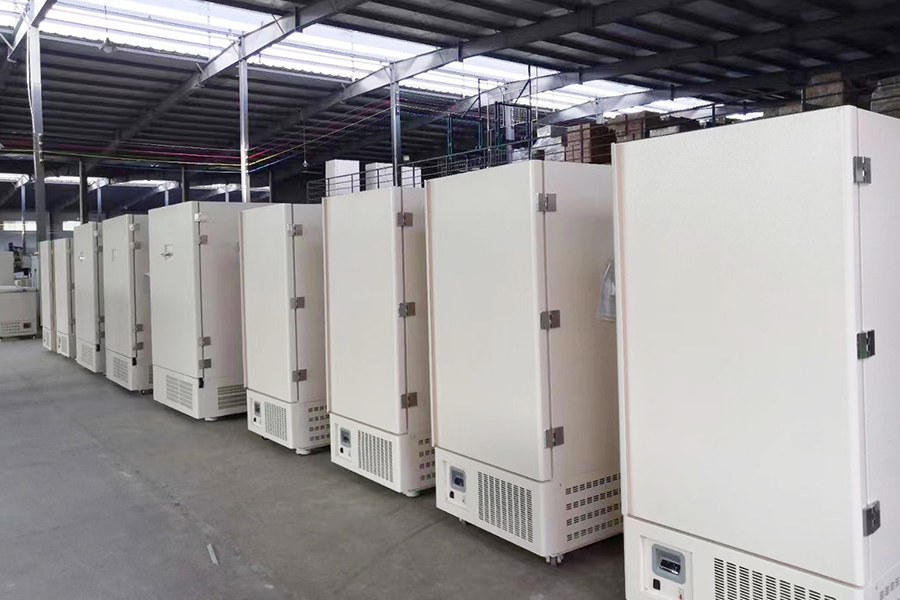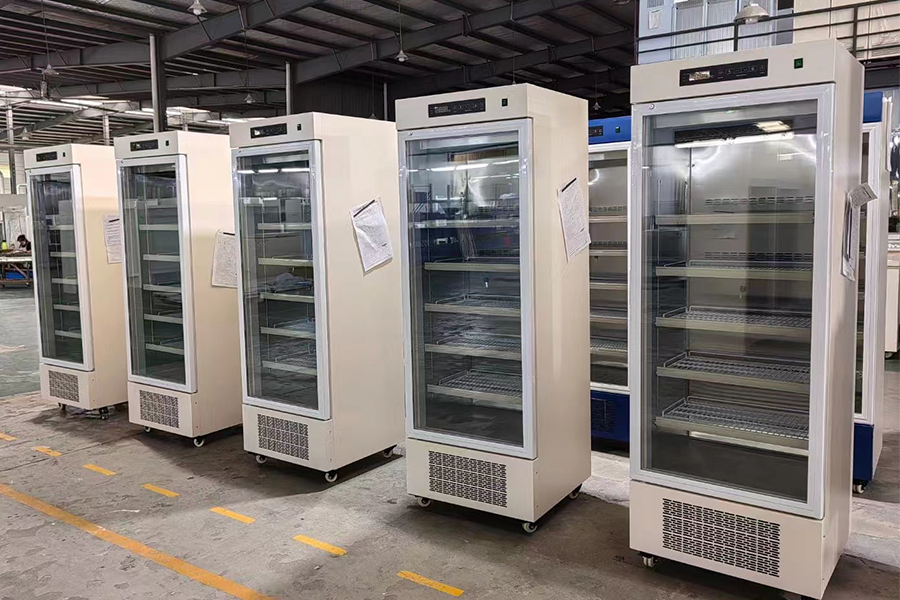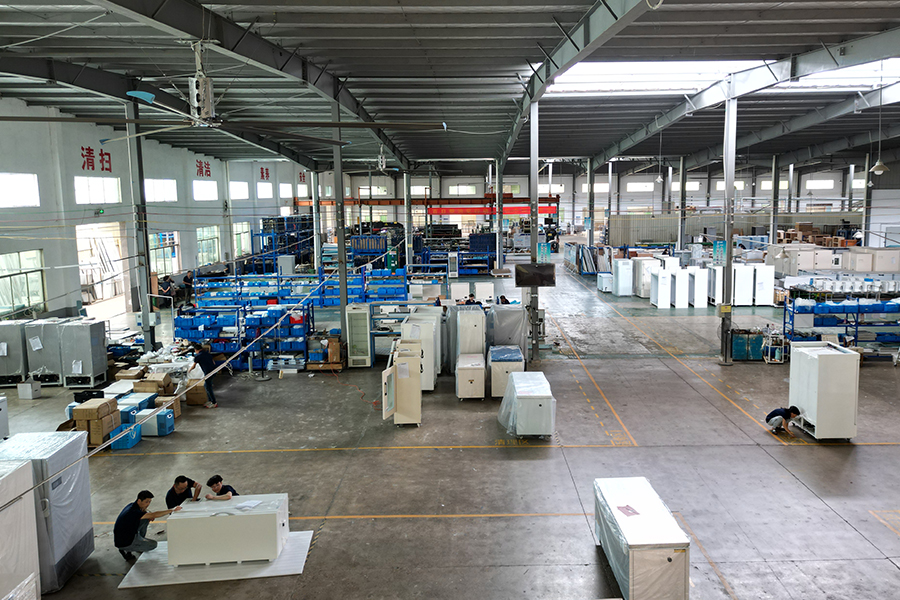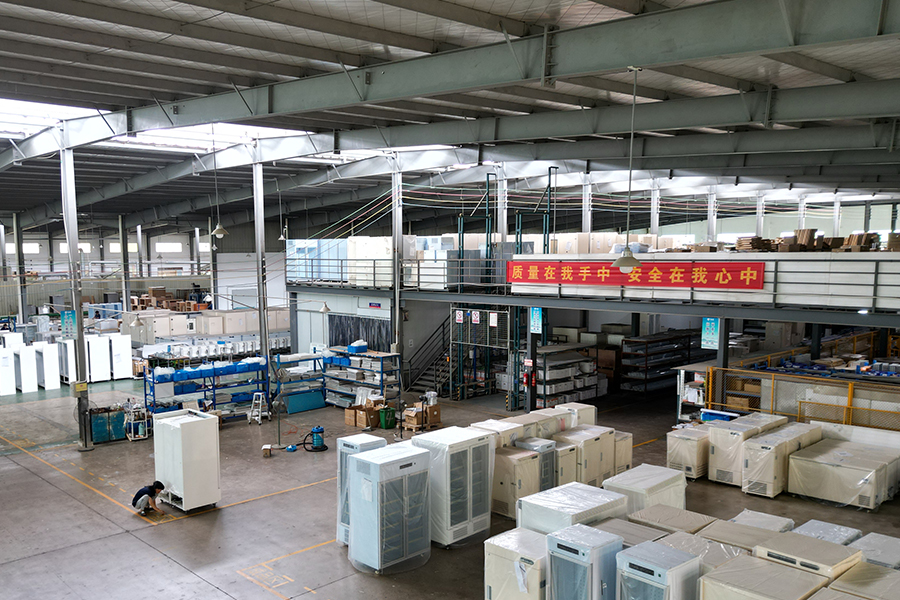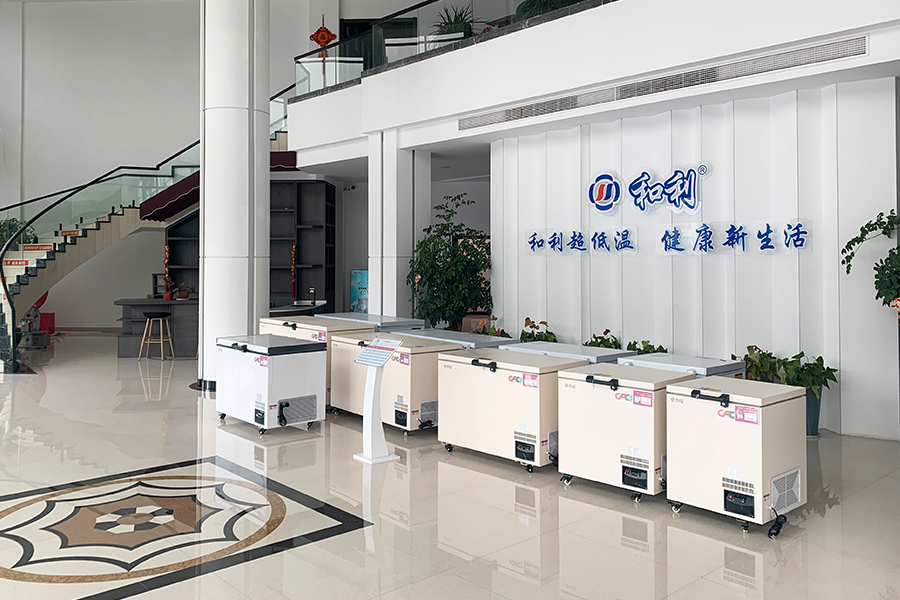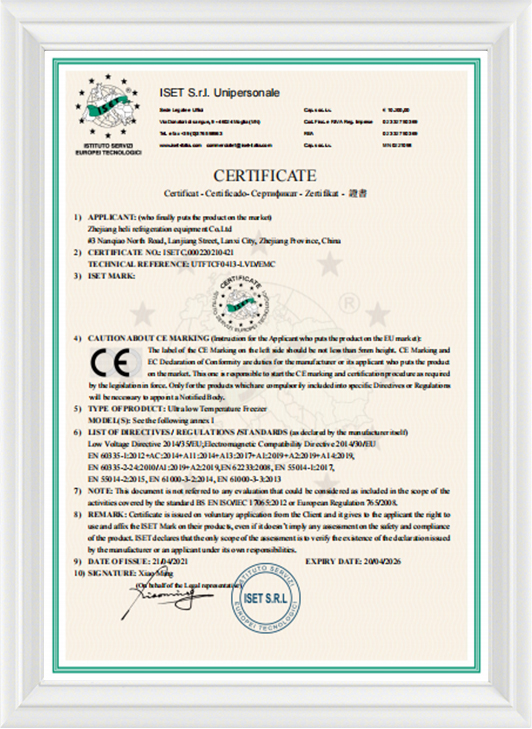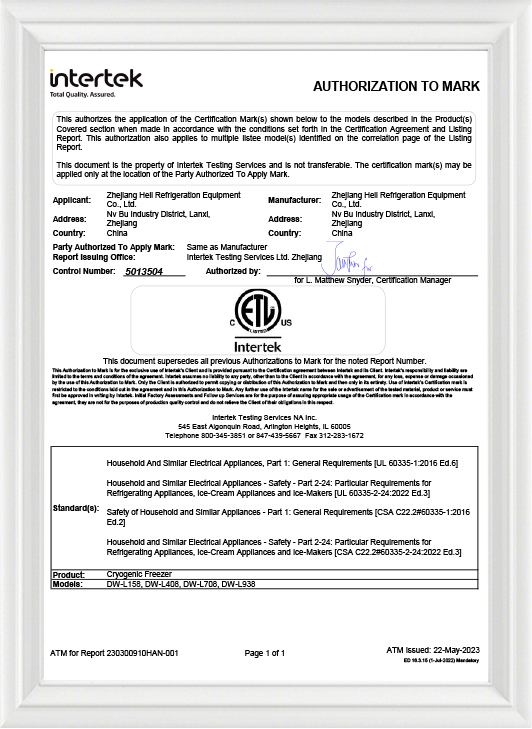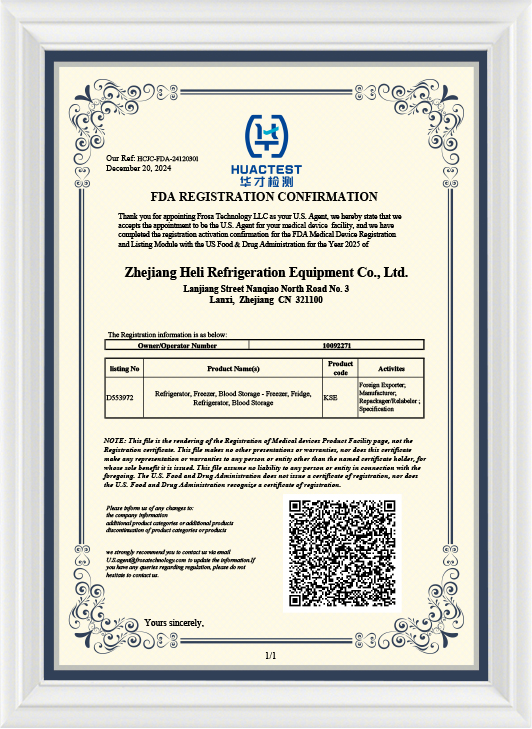A cryogenic medical refrigerator is a specialized refrigeration unit designed to preserve biological samples, vaccines, pharmaceutical products, and medical materials at ultra-low temperatures. These units ensure product stability, prevent degradation, and maintain the integrity of sensitive samples over long periods.
Cryogenic Freezer -150℃ Manufacturer
With fast temperature recovery, precise control, and low energy consumption, these units ensure reliable long-term storage for sensitive medical and industrial materials.The -150°C freezer is a high-performance cryogenic storage solution built for medical institutions, gene therapy labs, and industrial applications requiring temperature control. It provides secure storage for mRNA products, plasma, stem cells, and other temperature-sensitive materials.
Zhejiang Heli Refrigeration Equipment Co., Ltd. owns a 25,000-square-meter modern industrial park, featuring a scientific layout and comprehensive functions. The company has established a full-chain industrial system covering technological R&D to finished product inspection, which provides a solid guarantee for the high-quality production of ultra-low temperature refrigeration equipment.
-
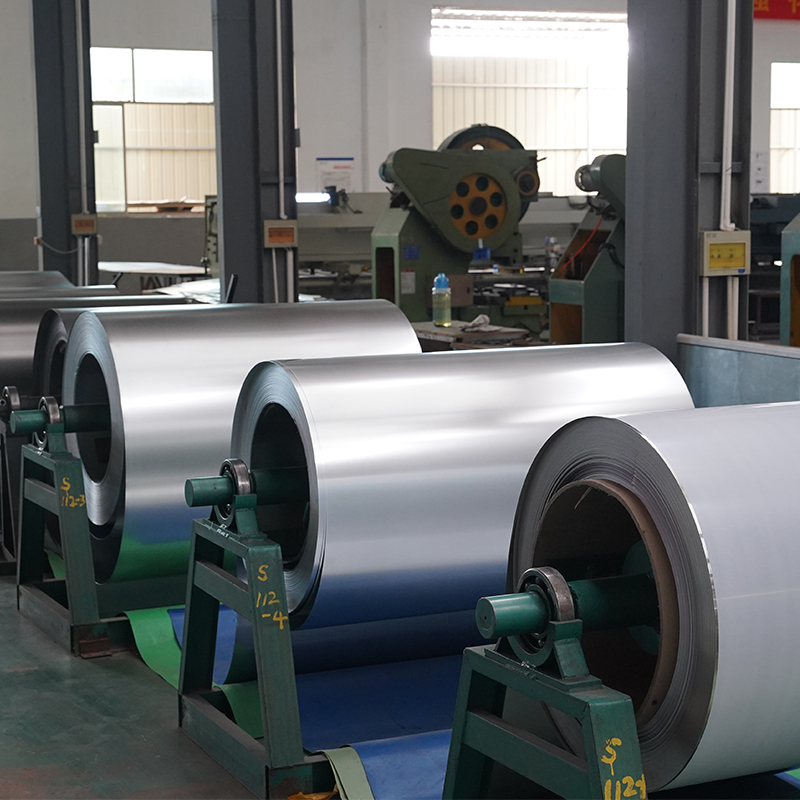 High quality raw materials
High quality raw materialsWe use high-quality raw materials, which are reliable and durable in quality.
-
 OEM/ODM
OEM/ODMWe have a professional R&D team that can design products according to different needs.
-
 Rich experience
Rich experienceWe have a professional technical team that can improve the process based on the different characteristics of the products to extend their service life.
-
 Quality inspection
Quality inspectionThe quality inspection room is equipped with advanced quality inspection devices. Before each refrigerator is dispatched, it needs to undergo various tests to ensure its stability and reliability.
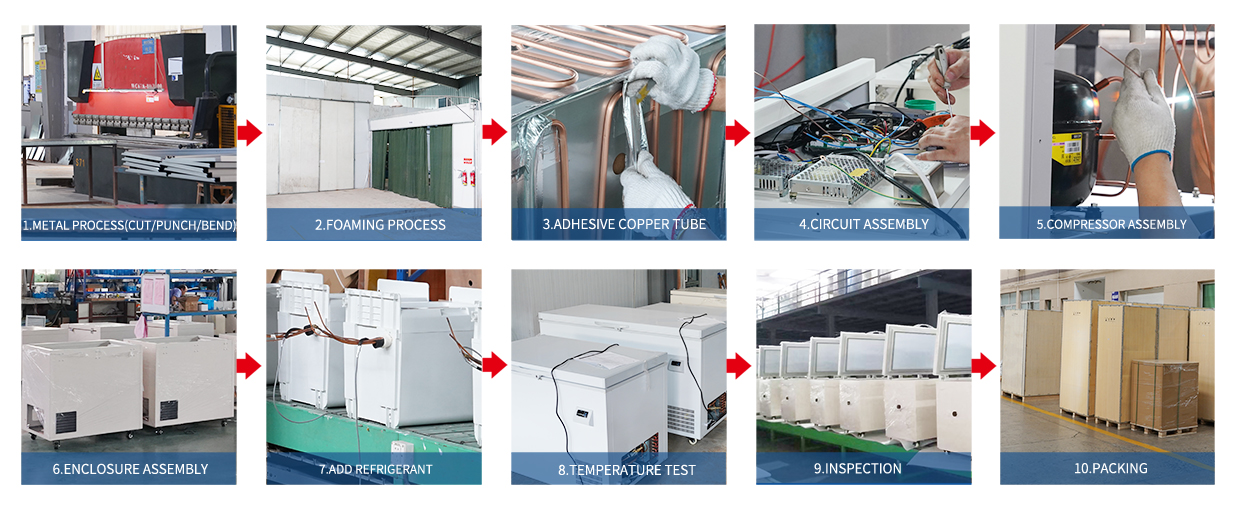
Q. 1. What is a cryogenic medical refrigerator?
Q. 2. What temperature ranges do your refrigerators cover?
Our product line includes models with various temperature capabilities:
•Pharmaceutical refrigerators: +2°C to +8°C
•Low-temperature freezers: down to –45°C or –60°C
•Ultra-low temperature freezers: –86°C
•Cryogenic freezers: as low as –150°CQ. 3. What safety and quality certifications do your refrigerators have?
Our products are manufactured in accordance with international standards and can be supplied with certifications such as FDA CE, ISO 13485, and ISO 9001. Each unit undergoes rigorous performance testing, quality inspection, and temperature calibration before delivery.
Q. 4. How do you ensure temperature accuracy and reliability?
Each model is equipped with a high-precision digital temperature control system, real-time monitoring sensors, and audible/visual alarm functions to detect temperature deviations. Optional data logging and remote monitoring systems are available for enhanced safety and traceability.
Q. 5. Can the refrigerators be customized to meet specific requirements?
Yes. We offer customization options for capacity, interior configuration, voltage, and monitoring systems. Custom branding, data interfaces, and alternative refrigerants (environmentally friendly options) can also be provided upon request.
Q. 6. Do you provide international shipping and after-sales service?
Yes. We export globally and work with logistics partners experienced in handling precision laboratory equipment. Our technical team provides remote support, spare parts, and professional guidance for installation and maintenance.
Q. 7. What are the maintenance requirements for cryogenic refrigerators?
Routine maintenance includes cleaning condenser filters, verifying temperature uniformity, and periodically checking door seals. Our after-sales team can provide maintenance guidelines and technical training for your staff to ensure optimal performance and longevity.
Q. 8. How can I choose the right model for my application?
Our sales engineers will assist you in evaluating your storage requirements — such as temperature range, sample volume, installation space, and power configuration — to recommend the most suitable model for your application.
Q. 9. Do you work with distributors or OEM partners?
Yes. We welcome collaboration with qualified distributors and OEM partners worldwide. We provide full technical support, marketing materials, and training to help our partners serve their markets effectively.
-
In sectors like healthcare and food delivery, maintaining ultra-low temperature conditions during transport is essential. Whether you're carrying vaccines, biol...
READ MORE -
When transporting temperature-sensitive materials—be they biological samples, pharmaceuticals, or premium perishables—a combination of ULT Car Freezer and ULT P...
READ MORE -
When choosing a portable freezing solution, users frequently compare ULT car freezers (mounted or integrated into vehicles) versus standalone ULT portable freez...
READ MORE -
The transportation of perishable goods requires precision, especially when it comes to temperature control. In the last years, ULT car freezer has gained signif...
READ MORE
A Brief History of -150℃ Cryogenic Storage Chest Freezers
The origins of cryogenic storage can be traced back to the early 20th century, when scientists began experimenting with the preservation of biological samples through freezing methods. The use of low temperatures for preserving cells and tissues was initially rudimentary, with only limited success in maintaining cell viability after thawing. However, advances in refrigeration technology in the mid-20th century led to the development of more reliable systems capable of achieving the ultra-low temperatures required for cryogenic preservation.
By the 1960s and 1970s, research institutions and biotechnology companies began to focus on improving freezing techniques for long-term preservation, particularly for human and animal embryos. The development of cryoprotectants, chemical agents that protect cells from ice damage during freezing, further enhanced the effectiveness of cryogenic storage. This breakthrough significantly expanded the use of cryogenic freezers in reproductive medicine and research.
The -150°C cryogenic storage chest freezer emerged in the late 20th century as a highly specialized tool for maintaining ultra-low temperatures required for preserving biological samples. The key to its success was its ability to reach and sustain the temperatures needed for long-term storage without compromising the integrity of the stored materials. As industries like pharmaceuticals, healthcare, and biotechnology grew, so did the demand for more advanced and reliable cryogenic storage solutions.
Today, -150°C cryogenic storage chest freezers are indispensable in laboratories, hospitals, and biorepositories worldwide. These units use sophisticated cooling mechanisms to maintain temperatures far below the freezing point of water, providing essential storage for sensitive materials that cannot survive in higher temperature conditions. Ongoing advancements in insulation technology, refrigeration systems, and energy efficiency continue to improve the performance and cost-effectiveness of these freezers, ensuring their critical role in modern science and medicine.
The Cooling Mechanism of Small Cryogenic Freezers
Small cryogenic freezers are designed to provide ultra-low temperatures, typically reaching -150°C or lower, for the storage of materials that require precise temperature control in a compact form factor. These freezers are used in a variety of industries, including biotechnology, pharmaceuticals, food preservation, and medical research. The cooling mechanism of small cryogenic freezers is complex, involving advanced refrigeration cycles, specific temperature control systems, and effective insulation techniques.
At the heart of a small cryogenic freezer is its refrigeration system. These freezers typically utilize a cascade refrigeration system, which is particularly effective for achieving the ultra-low temperatures required for cryogenic storage. In this system, two or more stages of cooling are used, each employing a different refrigerant suited for specific temperature ranges. The stage involves a high-temperature refrigerant that cools the freezer to a moderately low temperature. The second stage then uses a low-temperature refrigerant to further reduce the temperature to the desired cryogenic levels.
One of the commonly used refrigerants in small cryogenic freezers is nitrogen (LN2), which has a boiling point of -196°C. Nitrogen is used in liquid form for its ability to absorb and transfer large amounts of heat when vaporizing, making it highly efficient in achieving cryogenic temperatures. Some cryogenic freezers are equipped with liquid nitrogen reservoirs or utilize nitrogen-based refrigeration systems to reach the necessary subzero conditions. The precise control of nitrogen flow allows the freezer to maintain a steady temperature, even in smaller units.
Another important aspect of small cryogenic freezers is their temperature control system. These freezers often come equipped with advanced digital controllers and sensors that monitor and adjust the temperature within a very narrow range. Temperature fluctuations in cryogenic storage can cause irreparable damage to stored materials, so it is crucial to maintain a stable and uniform environment. The freezer's controllers regulate the flow of refrigerant and ensure that the desired temperature is maintained over long periods.



 中文简体
中文简体 English
English Français
Français عربى
عربى